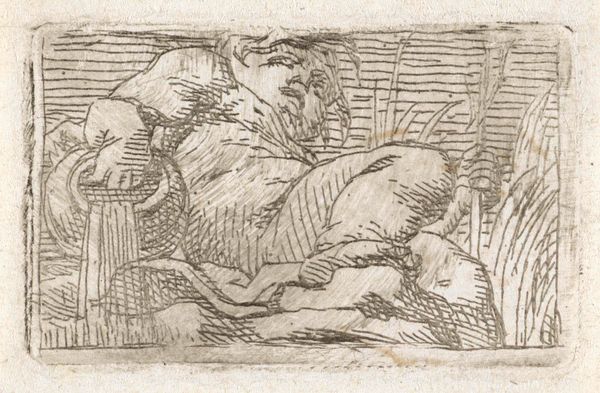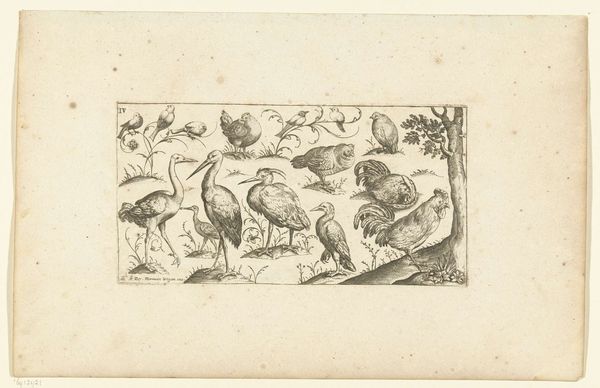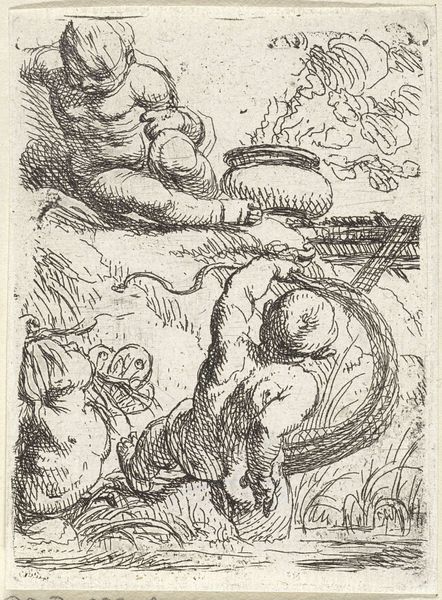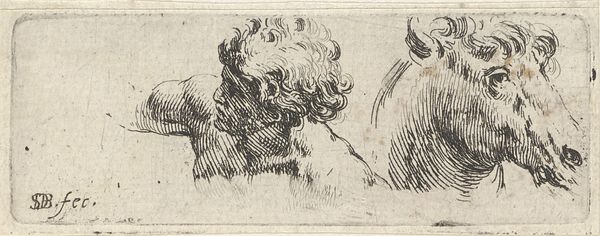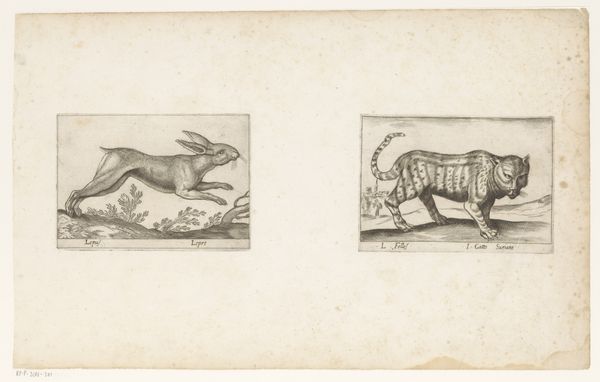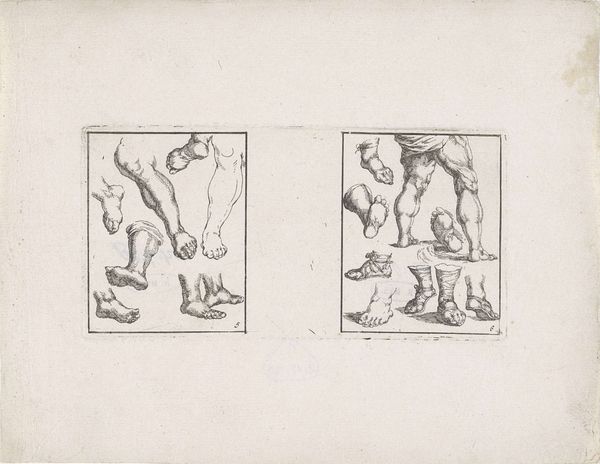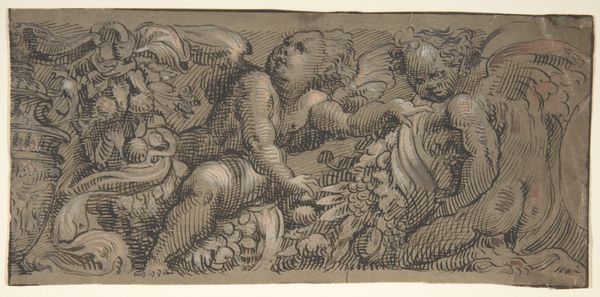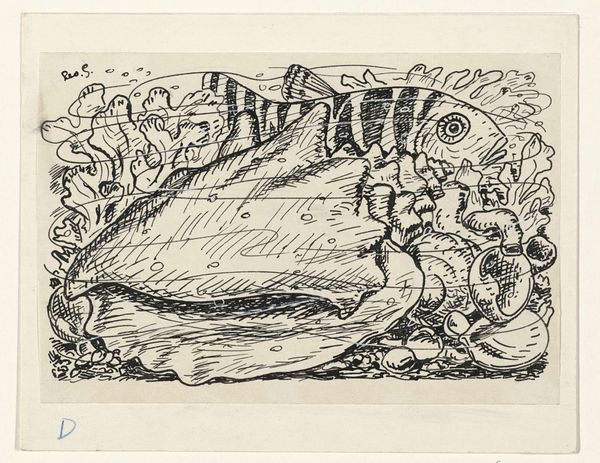
drawing, paper, ink
#
drawing
#
baroque
#
pen sketch
#
figuration
#
paper
#
ink
#
nude
Dimensions: height 35 mm, width 76 mm
Copyright: Rijks Museum: Open Domain
Curator: What strikes me immediately about this small pen and ink sketch, *Studieblad met twee figuurstudies* by Cornelis Schut, dating from around 1618 to 1655 and housed here at the Rijksmuseum, is its almost frantic energy, yet also a strange stillness. Editor: Yes, there's definitely something very visceral about the rendering here. The lines are so scratchy and immediate. The subjects look almost…caught. What’s interesting is the separation of those captured figures and the artificial, framed border they inhabit. Are we voyeurs? Curator: Well, study sheets like these were very common in baroque studios. Artists used them to practice depicting the human form, experimenting with different poses and angles. These nudes become tools of the trade. They are objects to be copied and refined, ultimately serving the higher goal of mastering the human body. This also means that what we see now as artistic gesture may originally have been rote studio procedure, which takes the emotion out of it slightly. Editor: I can appreciate that, but even understanding that these were for practice, I can't help but see these figures as vulnerable and unposed. The woman seated looks exhausted. She’s curled inward, while the man struggles with the physical weight and effort to reach upwards. Is that hope? Supplication? Is it all a grand performance for the divine, as many baroque subjects depict? Curator: Or are they models in repose between set changes? I suppose that, stripped of all explicit religious or mythological symbols, these images encourage different ways of seeing baroque artistic strategy itself, right? The sketchiness you’ve named, and their unfinished appearance prompts you to make assumptions and to create a narrative to which they may originally have been strangers. Editor: Absolutely! And perhaps that very quality, that openness to interpretation, makes this seemingly simple study sheet quite radical in its own way. I wonder what Schut would make of us assigning these thoughts to his sketches? Curator: Perhaps he'd laugh, recognize the spark of creativity, or perhaps not recognize the subjects in which we invest our interpretation. In either case, the work endures and asks us to bring our perspectives to it, regardless of authorial intent. Editor: Indeed. Another instance in which the viewers are the last brushstroke, I suppose.
Comments
No comments
Be the first to comment and join the conversation on the ultimate creative platform.
